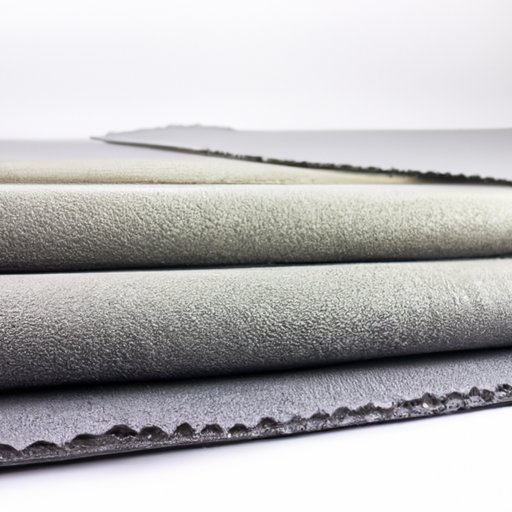
Introduction
Soundproofing your walls is essential if you want to create a noise-free home. It can be a daunting task, but with proper guidance, this process can be relatively straightforward.
This article will guide you through the different techniques of soundproofing your walls, from simple beginner tips to professional methods. You do not need to be a soundproofing pro to understand these techniques.
Beginner’s Guide to Soundproofing Walls: Tips and Tricks for a Quieter Home
Soundproofing your walls can seem like an overwhelming task, but it does not have to be. Beginner tips can be very useful in starting your soundproofing journey.
Acoustic panels, soundproof curtains, and weatherstripping are examples of simple and easy soundproofing methods for beginners that you can use in your home. Acoustic panels are great for absorbing sound waves, while curtains can absorb and reflect sounds when hung over windows and doors, and weatherstripping creates an airtight seal around gaps to prevent noise from entering.
When installing these methods, it is essential to keep in mind that you are not covering up or masking the sounds; you are reducing noise by absorbing it.
Soundproofing on a Budget: 5 Affordable Techniques to Reduce Noise in Your Home
Soundproofing does not have to be costly. Some budget-friendly soundproofing techniques can be just as effective as more expensive options. You can reduce outside noise by adding bookshelves or hanging curtains in front of your walls. You can also cover your walls with fabrics, blankets, or even egg cartons. Adding insulation to walls can also help reduce noise levels.
In order to use these methods, you need to have basic DIY skills, such as measuring and drilling. But, the techniques can significantly reduce noise levels in your home.
DIY Soundproofing: Step-by-Step Guide to Soundproof Your Walls Like a Pro
If you want to soundproof your walls like a pro, then the DIY soundproofing method is a good option.
One method is to create sound-absorbing panels. The panels can be handmade and can be installed on walls with adhesive materials. This DIY soundproofing panel is a cost-effective way to absorb sound waves, and the panels can be customized to fit the size and shape of your walls.
The other technique, which is more efficient but more expensive, is installing soundproof drywall. This type of drywall has an extra layer of plasterboard that helps block noise vibration.
Green Soundproofing: Eco-Friendly Options to Make Your Home Quieter
You may want to soundproof your home without negatively impacting the environment. There are many eco-friendly options that can reduce noise while still being kind to the environment.
One eco-friendly option is planting. Trees, bushes, and other types of greenery can act as a natural noise barrier. Planting a garden or adding an ivy wall can do wonders for reducing outside noise. Using recycled materials such as old newspapers, egg cartons, or corkboard is also an eco-friendly technique that can reduce noise in your home.
Soundproofing for Shared Walls: Techniques to Reduce Noise from Shared Spaces
If you share walls with neighbors, soundproofing can be an effective method to reduce noise in your home.
Soundproofing techniques for shared walls include adding additional layers of drywall or using materials that absorb sound waves. You can also use bookshelves, curtains, or other materials that absorb or reflect sound. Installing weatherstripping around doors and windows is also an effective method to reduce noise from outside.
Expert Roundup: Soundproofing Tips from Home Renovation Experts
We spoke to home renovation experts to get their top tips on soundproofing. Here are their suggestions:
- Use acoustic panels to reduce reverberation in your room.
- Make sure to cover the windows with thick curtains or blinds that absorb sound waves.
- Use insulation on your walls, floors, and ceilings to absorb sound.
- Try to avoid rigid materials that reflect sound and opt for materials that absorb sound waves instead.
- Consider adding weatherstripping to windows and doors to reduce external noise levels.
Conclusion
Soundproofing your walls does not have to be a complex process. From beginner-friendly tips to green and professional techniques, there are many methods to reduce noise levels in your home. Before choosing any method, it is essential to set a budget and consider your needs as well as the environment.
Remember, soundproofing can significantly enhance your living space’s quality by reducing noise levels. With the right tools and guidance, the process can be easy, affordable, and fun.





